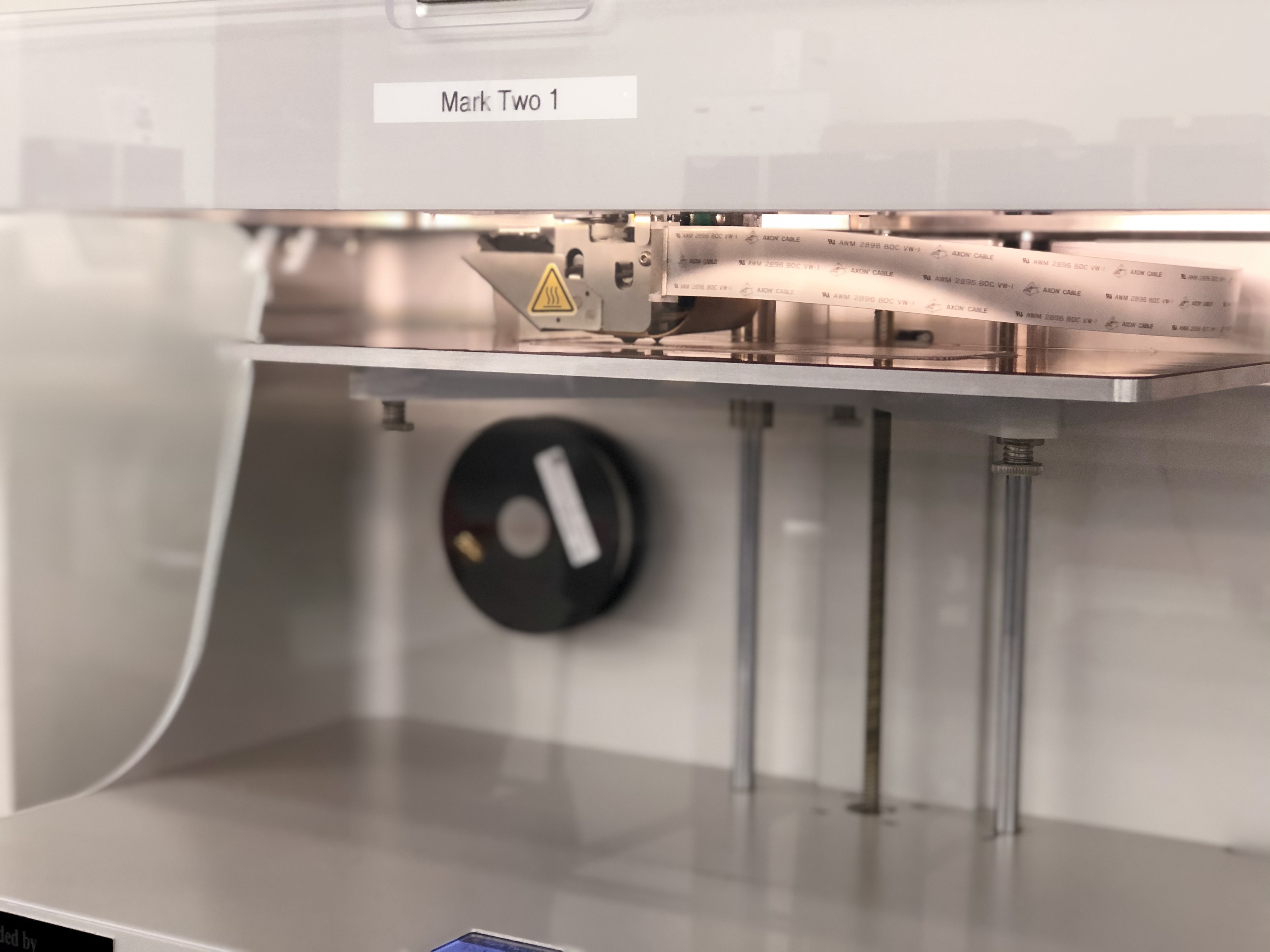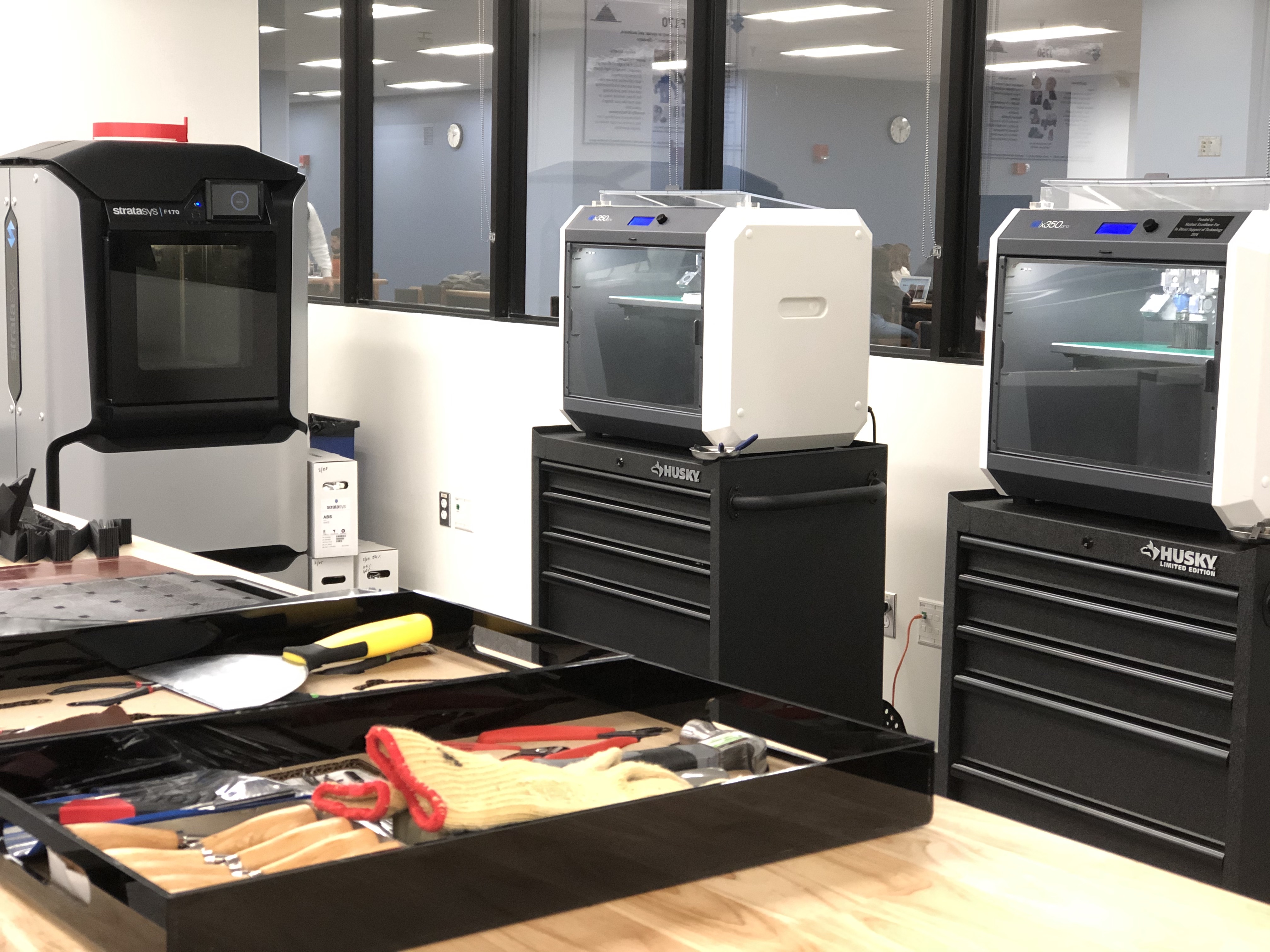By Reina Suio and Delaney Tran
Many students pick up a Starbucks drink from the library, some people go straight to the fifth floor, Armand Kizirian, however, chooses to pick up a 3D-printed shoe.
Located on the basement floor of the library is the Gerald M. Kline Innovation Space, a hidden-gem where students can create anything from a hoverboard to a paperclip.
The Gerald M. Kline Innovation Space has been used by close to 1,000 students since its opening last year. The I-Space, as it is also called, offers equipment including 3D printers, digital scanners and laser cutters. Professors use the space for teaching material for their classes.
“It’s a teaching tool for instructors; they learn at the same time as students do,” said Christiane Beyer, the technical director of Innovation Space and an associate professor in the Department of Mechanical and Aerospace Engineering.
Enlarge

Delaney Tran / Daily Forty-Niner
For instance, in Beyer’s Mechanical & Aerospace Engineering course, her students use the equipment to create an innovative product that can be marketable to consumers. Her students collaborate with students from majors including computer science, industrial science and electrical science.
Beyer, along with Roman Kochan, the dean of library services, worked together to help make the space possible and they continue to help choose new equipment. Over the course of three years, the I-Space rooms and equipment costed a total of $1.6 million, with donations provided by Gerald M. Kline and the Student Excellence Fee from Associated Students Inc.
“Students come in and say, ‘This year, can I do this, can I develop this?’ It’s really feeding to their benefit,” Beyer said.
One of the majors that use I-Space is industrial design. Students are able to render objects on their screens before printing out prototypes, objects or devices.
Wesley Woelfel, an associate professor of the industrial design program, teaches DESN 150 Design Drafting and his class recently toured the I-Space. The students in his course are mainly freshmen and sophomores, so the class gives them an opportunity to familiarize themselves with the equipment and programs.
“For us, it’s a big deal to make stuff and then evaluate once you make it,” Woelfel said, “and then empower the students, provide them with an agency to create their own ideas, to feel like they can do what they need to do.”
Students are required to create three to four projects during the semester, including a bookmark or paperclip, bag clip, phone stand and bike mount. To create these projects, they go through a process of sketching out the ideas then 3D rendering, modeling and printing the object or prototype.
Enlarge

Delaney Tran/ Daily Forty-Niner
Armand Kizirian, a third-year industrial design major, used the I-Space for many of his classes. His favorites include making a hovercraft and a prototype of a shoe. Design students receive briefs that challenge them to create products that would fit its description. They then go through a design process by researching who the product should be marketed towards, how it will function and then how it will look aesthetics-wise.
While 3D printing is an innovative way to create products and prototypes, Kizirian feels it can also be a limitation to the traditional way of creating art.
“Printing is great and all, but it completely disconnects what is something you would mill with general woodshop equipment, you just push a button,” Kizirian said. “It’s a lot more digital and streamlined, but detracts from the creative process.”
Although the design department has its own lab, the I-Space is an environment where students can ask questions to the available technicians to help with their creative process. Students can use these services for a discount after paying a $5 fee.
The I-Space is in the middle of transitioning to phase two, which will nearly double the 2,185-square-feet space to 4,085-square-feet, according to Kochan. Phase two will feature new equipment from Igloo, a virtual and augmented reality company. CSULB will be the first in California to have this specific equipment and second in the United States after Michigan State University. Currently, the equipment is being set up and is expected to be available in spring 2020.
“It’s hard to ask for more from [the I-Space] since all the equipment in that room cost over a million dollars,” Kizirian said. “You get amazing resolution and lots of materials to print from. It’s pretty dreamy.”
This article previously reported that improvements would happen to the I-Space in the future, which is incorrect. The correction was made Nov. 6 at 12:01 p.m.




